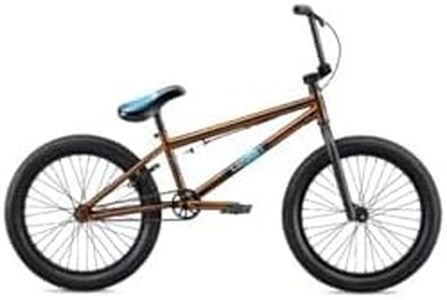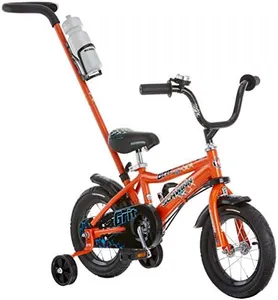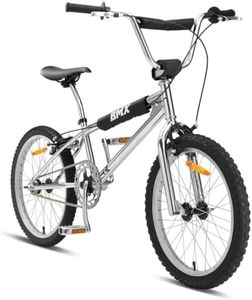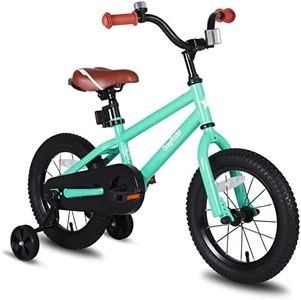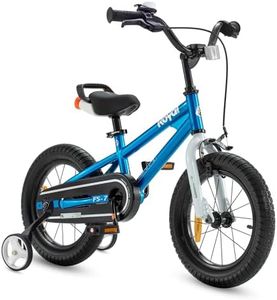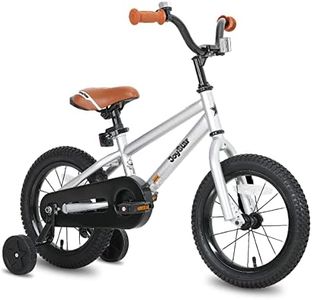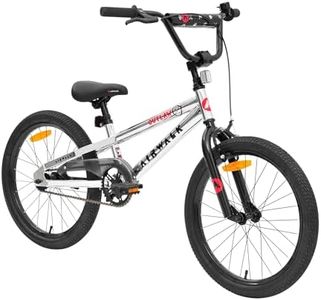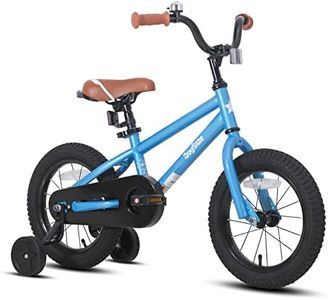We Use CookiesWe use cookies to enhance the security, performance,
functionality and for analytical and promotional activities. By continuing to browse this site you
are agreeing to our privacy policy
10 Best Bmx Bikes For Kids
From leading brands and best sellers available on the web.By clicking on a link to a third party's website, log data is shared with that third party.
Buying Guide for the Best Bmx Bikes For Kids
When choosing a BMX bike for kids, it's important to focus on how the bike matches your child's age, height, skill level, and intended use. BMX bikes for kids can vary widely in size and features, so understanding the basics will help you pick a bike that is safe, comfortable, and fun to ride. Rather than just going with the most popular or visually appealing option, look for a model that fits your child's needs and is designed for their safety and enjoyment as they learn and grow.Bike Size (Wheel Diameter)The size of the bike, most commonly referred to by the wheel diameter, is crucial because it determines how easily your child can ride and control the bike. For kids, typical BMX wheel sizes are 12", 16", 18", or 20". Smaller wheels (12" or 16") are right for young children (ages 4-7), while 18" suits those 7-9, and 20" is the standard for older kids and teens. When choosing, match the wheel size to your child's height and make sure they can touch the ground with their feet when sitting on the bike. Riding a bike that’s too big or too small can be uncomfortable and unsafe.
Frame MaterialThe frame material affects both the weight and durability of the BMX bike. Common materials are steel and aluminum. Steel frames are sturdy and offer a smoother ride but can be heavier, which might make it harder for very young riders to handle. Aluminum frames are lighter and easier for kids to lift and maneuver, but sometimes cost more. For most beginners and young riders, a lightweight frame makes for a more enjoyable and easier riding experience.
Brake TypeBMX bikes for kids typically come with either coaster brakes (braking by pedaling backward) or hand brakes (levers on the handlebars). Coaster brakes are simpler for very young children learning to ride, while hand brakes give more control and are necessary as skills progress—especially if your child will use the bike for tricks or on ramps. Choose based on your child's coordination and riding confidence; for most kids above age 6, learning to use hand brakes is a good step for better control.
WeightA lighter bike is easier for kids to control, pick up, and ride comfortably, especially for younger or less experienced riders. Heavier bikes are often more durable, but might be tiring or frustrating for kids if the weight is too much for their strength. When picking a BMX, ensure your child can easily lift and maneuver the bike themselves, as this will build their confidence and make each session more enjoyable.
AdjustabilityKids grow quickly, so a BMX bike with adjustable seat height and handlebars allows you to adapt the fit as your child grows. This not only extends the bike’s life, but also ensures your child remains comfortable and safe. Look for models that clearly offer tool-free or easy adjustments. If your child is between bike sizes, adjustability is especially important to allow more growing room.
Intended Use (Riding Style)Some BMX bikes are designed mainly for racing, while others are built for freestyle riding or just casual play. Racing bikes are lightweight and fast, with fewer features, while freestyle bikes are sturdier, better for tricks, and may come with reinforced parts or pegs. If your child just wants to ride around the neighborhood, a basic sturdy model is fine. But if they're interested in ramps or tricks, durability and strength in the frame matter more. Think about where and how your child will ride most often when deciding.
